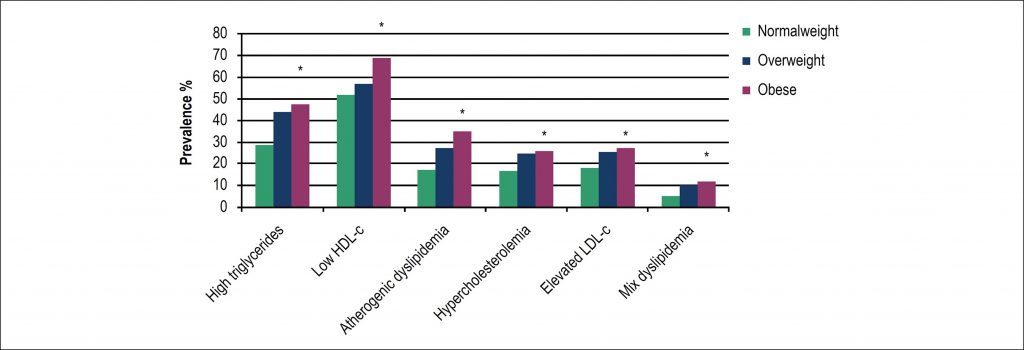Arq. Bras. Cardiol. 2018; 110(1): 30-35
Prevalence of Dyslipidemias in Three Regions in Venezuela: The VEMSOLS Study Results
DOI: 10.5935/abc.20170180
Abstract
Background:
The prevalence of dyslipidemia in multiple regions of Venezuela is unknown. The Venezuelan Metabolic Syndrome, Obesity and Lifestyle Study (VEMSOLS) was undertaken to evaluate cardiometabolic risk factors in Venezuela.
Objective:
To determine the prevalence of dyslipidemia in five populations from three regions of Venezuela.
Methods:
During the years 2006 to 2010, 1320 subjects aged 20 years or older were selected by multistage stratified random sampling from all households in five municipalities from 3 regions of Venezuela: Lara State (Western region), Merida State (Andean region), and Capital District (Capital region). Anthropometric measurements and biochemical analysis were obtained from each participant. Dyslipidemia was defined according to the NCEP/ATPIII definitions.
Results:
Mean age was 44.8 ± 0.39 years and 68.5% were females. The prevalence of lipids abnormalities related to the metabolic syndrome (low HDL-c [58.6%; 95% CI 54.9 – 62.1] and elevated triglycerides [39.7%; 36.1 – 43.2]) were the most prevalent lipid alterations, followed by atherogenic dyslipidemia (25.9%; 22.7 – 29.1), elevated LDL-c (23.3%; 20.2 – 26.4), hypercholesterolemia (22.2%; 19.2 – 25.2), and mix dyslipidemia (8.9%; 6.8 – 11.0). Dyslipidemia was more prevalent with increasing body mass index.
Conclusion:
Dyslipidemias are prevalent cardiometabolic risk factors in Venezuela. Among these, a higher prevalence of low HDL is a condition also consistently reported in Latin America.
317

